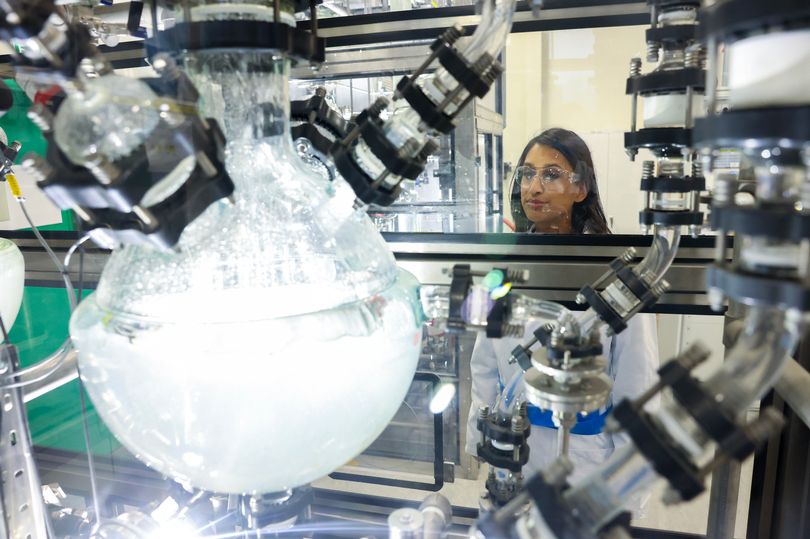
The Springfields site at Salwick is one of only two in the UK with the potential to produce the special type of uranium that will be needed in the decades to come. Research into the fuel – known as “high-assay low enriched uranium (HALEU)” – is already being carried out at the plant, which is operated by Westinghouse UK.
Speaking to the LDRS after a visit on Thursday to the National Nuclear Laboratory at Springfields, Claire Coutinho, the Secretary of State for Energy Security and Net Zero, said there was “a strong possibility” that there will be “a direct benefit for Lancashire and Cheshire” from the £300m that the government has this week committed to investing in the HALEU programme. The other facility with potential production capability is at Capenhurst, near Chester.
The cash commitment will enable the UK to become the first country outside of Russia to commercially produce HALEU, which it is hoped will help drive Vladimir Putin’s Russia out of the global energy market.
Ms. Coutinho said that the technology for advanced modular reactors (AMRs) is currently being developed and it is hoped to have the first demo model by 2030.
“The advanced nuclear fuel will then be ready in time for that fleet of AMRs, when [it] starts to come online. They are researching that type of fuel at the [National Nuclear Laboratory], which has been really important in the development of the work that we’re doing and the [government’s civil nuclear] roadmap. We will then be looking in the next phase at who could commercially produce it – and that’s the…stage which we will set out this year.
“This is also a really important announcement when it comes to energy security – not just at home but also of our allies abroad. It’s really important that we don’t wean ourselves off Russian oil and gas only to be dependent on them for nuclear fuel,” Ms. Coutinho added.
The £300 million investment is part of plans to help deliver up to 24GW of reliable nuclear power by 2050 – the biggest expansion in capacity in 70 years and enough to meet a quarter of the UK’s electricity needs.
That ambition includes exploring the development of a GW-scale power plant as big as those at Sizewell in Suffolk and Hinkley in Somerset, which are capable of powering six million homes each, as well as a competition to develop small modular reactor technology.
Springfields has been producing nuclear fuel since 1946 and around a third of the UK’s low-carbon electricity comes from fuel manufactured at the Fylde site.